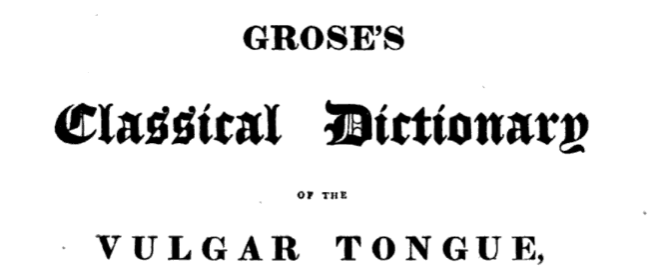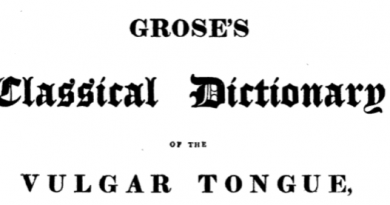Dictionary of the Vulgar Tongue – Day 142
The Dictionary of the Vulgar Tongue was first published at the end of the eighteenth century, and given that the current health crisis is giving too much time to read books, I thought I’d pick a daily word from it until I got bored…. And I’ve now caught up after getting behind last weekend when on a camping expedition.
Gog and Magog
The dictionary defines this as “two giants, whose effigies stand on each side of the clock on Guildhall, London; of whom there is a tradition, that, when they hear the clock strike one, on the first of April, they will walk down from their places”. I’m relying on Wikipedia to tell me that “in Ezekiel 38, Gog is an individual and Magog is his land; in Genesis 10 Magog is a man, but no Gog is mentioned; and centuries later Jewish tradition changed Ezekiel’s ‘Gog from Magog’ into ‘Gog and Magog'”.
There were carved depictions of Gog and Magog at London’s Guildhall from the medieval period, with the legend saying that they were originally giants who were chained by Brutus to the gates of the building. The carvings were unfortunately destroyed during the Great Fire of London in 1666, but replacements were installed in 1708, designed by Captain Richard Saunders. It is these that Grose refers to in his dictionary, but, sadly, these too were destroyed when fire damaged the building in the 1940s during the Blitz. New replacements were installed in 1953, carved by David Evans and these remain there today, but have yet to walk down from their places.



